Roomba i3+ vs. i7+ vs i6+ vs. i8+ Face to Face Comparison Review
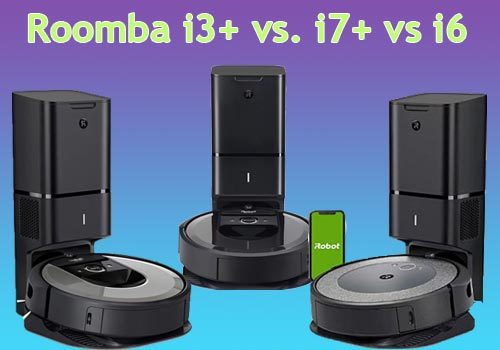
Massachusetts robot vacuum brand iRobot just released two new models that fall in the I series line of vacuums that had just one model, the i7/i7+.
The new entrants to this series are the i3/i3+ and i8/i8+.
In this Roomba i3+ vs. i7+ vs. i6+ vs. i8+ comparison review, we have put the three models to a contest to determine the best bang for the buck. Find out the similarities and differences.
But before getting into the main business of the day, here is an overview of the models.
Comparison Table
Roomba i7 vs. i7+
The Roomba i7 (7150) and Roomba i7+ (7550) were released in September 2018 and were the industry’s first self-emptying robot vacuums.
The two are similar from all angles except for the accessories included. The Roomba 7150 is the base model and doesn’t come with the Clean Base™ Automatic Dirt Disposal unit, while the Roomba 7550 comes with the Clean Base™ Automatic Dirt Disposal unit.
The i7 and i7+ also debuted the new iAdapt 3.0 navigation and mapping system, which brought on board Imprint™ Smart Mapping technology, enabling homeowners to choose specific rooms or areas to clean.
Roomba i6 vs i6+
Roomba i6+
The Roomba i6 and i6+ have been around since Amazon Prime Day. The two models are compatible with the self-emptying technology. The i6 doesn’t come with the CleanBase unit while the i6+ comes with the unit.
For the record, the Roomba i6 and i6+ are Amazon exclusive variants of the i7 and i7+. The difference between the i6/i6+ vs i7/i7+ is the fact that the former comes with an extra side brush and filter. Otherwise, all the other features are the same.
Roomba i3 vs. i3+
Roomba i3 (3150) and Roomba i3+ (3550) are the latest Roombas released in September 2020. The two are entry-level Roombas that tag along with self-emptying bin technology.
The i3 and i3+ share the same features, but the difference comes in the accessories. The basic model, the i3, doesn’t include the Clean Base™ Automatic Dirt Disposal unit, but it is compatible with the technology. If you want a model that comes with the accessory, buy the Roomba i3+.
As mentioned above, these two are entry-level Roombas, so don’t expect them to have the same features that high-end models such as the S9 have. But it is worth mentioning iRobot Genius™ Home Intelligence, a new feature that unlocks intelligent features such as event-based automation, recommended cleaning schedules, and pre-set cleaning routines.
There’s also a debate between Roomba i3 vs. i4, and for the record, Roomba i4 (4150) and i4+ (4550) are basically Costco’s versions of the i3 and i3+.
Roomba i8 vs. i8+
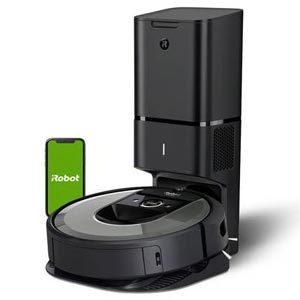 The Roomba i8 (8150) and Roomba i8+ (8550) are the other two Roombas released in September 2020. The duo also features automatic self-emptying technology and is very much similar to the Roomba i7.
The Roomba i8 (8150) and Roomba i8+ (8550) are the other two Roombas released in September 2020. The duo also features automatic self-emptying technology and is very much similar to the Roomba i7.
The Roomba i8 doesn’t include the Clean Base™ Automatic Dirt Disposal unit, but it supports the technology. On the other hand, the i8+ comes with the Clean Base™ Automatic Dirt Disposal unit in the package.
For the record, the Roomba i8 and i8+ are not available on Amazon as they are Costco-specific models. Most websites claim that they pack the same features that the i7 and i7+ have, but this is not true. There is a slight difference between Roomba i7+ vs. i8+, which is among the things we’ll be looking at in this Roomba i3+ vs i7+ vs i8+ comparison review.
Roomba i3+ vs i7+ vs i6+ vs i8+ Face to Face Comparison Review
Now that you are acquainted with a thing or two about the models in this review let’s get into the finer details.
1. Design and Aesthetics

The design of a Roomba is important when it comes to handling the deep corners and wall edges. But aesthetics have nothing to do with the cleaning performance. So, how do the three Roombas compare in terms of design and aesthetics?
- Roomba i7/i7+ and i6/i6+ have a round shape design and are much similar to the previous models. In terms of dimensions and weight, the two units have a 13.34-inches diameter and stand at 3.63-inches. Regarding the weight, the two are 7.44lbs without the Clean Base™ Automatic Dirt Disposal unit. The finish is black for the US model, but the Chinese version is black with silver accents.
- Roomba i3 and i3+ are also round-shaped Roombas with a 13.26-inches diameter and are 3.63-inches high. This is quite different from what is expected now that the other new Roomba, the S9, and S9+ are D-shaped, like Neatos. As for the weight, the two units are 7.44lbs without the Clean Base™ Automatic Dirt Disposal unit. Regarding the finish, Roomba i3/i3+ have a greying woven-textured top panel.
- The Roomba i8 and i8+ have the same round-shaped design, with almost the same dimensions and weight as the Roomba i3/i3+ and i7/i7+. The diameter is 13.26-inches, while the height is 3.63-inches. On the other hand, the weight is 7.44lbs, of course, without the Clean Base™ Automatic Dirt Disposal unit. Regarding the finish, the i8/i8+ is available in black.
2. Cleaning Performance
The most important consideration when choosing the best Roomba is cleaning performance. In this section, we will dissect these three Roombas to find out what each one is best for, and more so, the individual components that define the cleaning performance.
(a) Orientation
Make sure the Roomba you buy can handle all your immediate cleaning needs, be it bare floors, pet messes, or carpets.
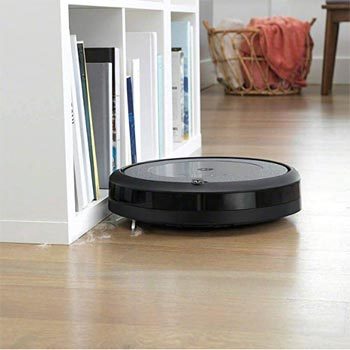
- The Roomba i3/i3+ has been designed to clean all types of bare floors, talk of hardwood, tile, vinyl, and ceramic. The robot has also been designed to handle pet hair, but then, it struggles on carpets.
- The Roomba i7/i7+ and i6/i6+, on the other hand, is not in any way different from Roomba i3. It’s also ideal for cleaning bare floors and pet hairs. But on carpets, it doesn’t guarantee the best performance.
- Last is the i8/i8+, which is just the same as the other two Roombas in this comparison review. It is also ideal for cleaning bare floors and pet hair but still struggles on carpets.
(b) Suction Power
The vacuum power of a robot vacuum can be the deal maker or breaker. The best choice should be a robot vacuum with high suction power and adjustable suction levels.
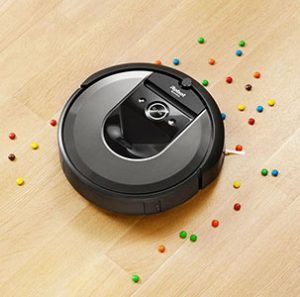
The Roomba i7/i7+ and i6/i6+ also rely on a 2nd Gen motor, which delivers 10X the air power compared to the 600 series Roombas. The average suction power is also 900pa, which is not enough to handle carpets.
(c) Brush System
The brush system is also an important component of Roomba’s cleaning system, dubbed the 3-stage cleaning system. It is responsible for agitation and dirt pickup.
- Roomba i3/i3+ comes with the new AeroForce brush system, which includes a single side sweeping brush and a dual multi-surface brushroll. Worth noting is the dual multi-surface brushroll that consists of two brushes: one for agitation and another for dirt pickup.
- Next up is the Roomba i6/i6+ and i7/i7+, which also use the iRobot AeroForce technology that consists of a side sweeping brush and a primary brush. The primary brush also has a dual multi-surface design.
- The i8/i8+, on the other hand, maintains the AeroForce brush system that is present in the i3 and i7, so you get the same performance.
(d) Filtration
While the three Roombas are similar in the other areas, there is a slight difference in the filtration. Here, we will assess the filters, bin capacity and features, bin emptying technology, accessories included, and seal system.
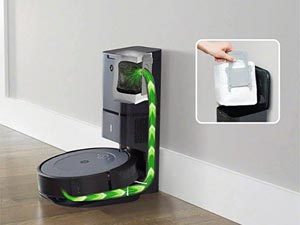
Roomba i3 and i3+ come with one high-efficiency filter that captures 99% of allergens such as pollen, dust mites, molds, and pet allergens.
The inbuilt bin capacity is 0.5L, and there’s a full bin indicator. Now, while both robot vacuums work with the iRobot self-emptying bin system, only the i3+ (3550) comes with the unit. But you can still purchase the Clean Base unit separately and use it on the i3 (3150).
For the record, the i3 comes with a disposable bag that can hold 30 days of dirt.
(e) Dirt Detect
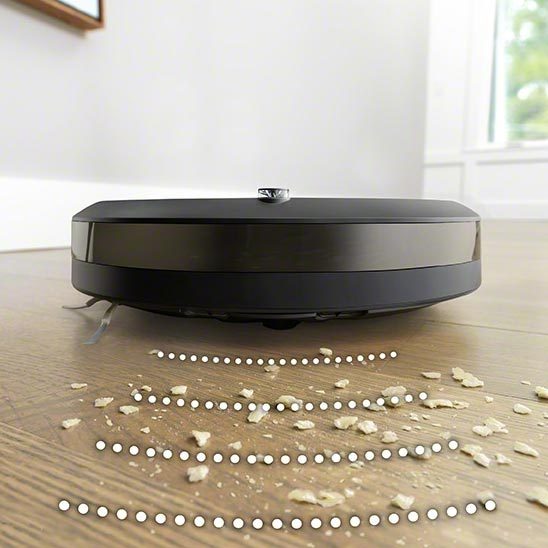 One of the unique offerings of iRobot is Dirt Detect, a technology that identifies spots with concentrated dirt. There are two variants of the technology; Dirt Detect Series I and Dirt Detect Series II.
One of the unique offerings of iRobot is Dirt Detect, a technology that identifies spots with concentrated dirt. There are two variants of the technology; Dirt Detect Series I and Dirt Detect Series II.
- Roomba i3 and i3+ come with Dirt Detect Series II, which uses optic and acoustic sensors to detect dirt.
- Roomba i7/i7+ and i6/i6+ also use Dirt Detect Series II.
- The i8 and i8+ also deploy Dirt Detect Series II.
(f) Cleaning Test Results
In this section, find how each of these Roombas performed in a real household setting. We tested them on bare floors, low and high pile carpets using the everyday household dirt, talk of flour, sugar, glucose, sand pebbles, long and short dog hair, kitty litter, and Cheerios.
3. Battery and Autonomy
In this section, we want to find out about these three Roombas’ battery capacity, the runtime, and, most importantly, power management.
- Roomba i7/i7+ and i6/i6+ come with a smaller 1800mAh battery that runs for 75 minutes compared to its predecessor, Roomba 980, that has a 120 minutes runtime. This is a lithium-ion battery that automatically recharges and resumes cleaning.
- Next up is the Roomba i3 and i3+, which also has a 1800mAh lithium-ion battery that lasts for 75 minutes. This one too recharges and resumes cleaning automatically.
- The Roomba i8 and i8+ take a different approach here. The two come with the Roomba® i8 Denali 2210mAh battery mAh battery that offers an impressive 90 minutes runtime. This one too recharges and resumes cleaning automatically.
4. Navigation, Mapping, and Boundary Marking
In this section, we will assess how these three Roombas navigate around the house and map the floors.
(a) Navigation
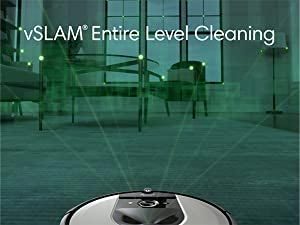 The old Roomba navigation technology is SLAM (Simultaneous Localization and Mapping)-based while the newer models use VSLAM (Visual Simultaneous Localization and Mapping). The latter is the best, especially if you have high traffic rooms.
The old Roomba navigation technology is SLAM (Simultaneous Localization and Mapping)-based while the newer models use VSLAM (Visual Simultaneous Localization and Mapping). The latter is the best, especially if you have high traffic rooms.
- Roomba i3 and i3+ are basic Roombas and use iAdapt 1.0, a SLAM-based navigation system. The robot has obstacle detection sensors and cliff detection sensors, which aid the robot in localization and prevent accidents such as hitting obstacles or falling off the stairs.
- The Roomba i7/i7+ and i6/i6+, on the other hand, comes with iAdapt 3.0, a VSLAM navigation system. This system is similar to the previous iAdapt 2.0 relies on sensors and a real-time camera for navigation. It is the best choice if you have high traffic rooms and large apartments.
- Last is the Roomba i8 and i8+, which also use the iAdapt 3.0 navigation system. It is also suitable for high traffic rooms and large apartments, just like the i7 and i7+.
(b) Floor Mapping and Boundary Marking
 Besides navigation, it’s important to assess the floor mapping technology used to ensure your Roomba cleans every inch of your floor fast and efficiently.
Besides navigation, it’s important to assess the floor mapping technology used to ensure your Roomba cleans every inch of your floor fast and efficiently.
- The Roomba i7/i7+ and i6/i6+ have an intelligent floor mapping system that learns, maps, and adapts to your home’s layout. It is called Imprint Smart Mapping and is the main addition in the new iAdapt 3.0 technology. With this technology, you can tell the Roomba to clean specific rooms and avoid others. When it comes to boundary mapping, we are glad iRobot ditched the strenuous physical barriers (Virtual Walls and Virtual Walls & Lighthouses) for digital barriers (Keep Out Zones) that can be set right from the mobile app.
- The Roomba i8 and i8+ also come with iAdapt 3.0, meaning they have Imprint Smart Mapping. These, too, can learn, map, and adapt to your home’s layout for accurate and precise cleaning. You can also tell the I8+ to clean specific rooms instead of vacuuming the entire house. Regarding boundary marking, Keep Out Zones, the digital barrier is still intact. Besides, the two come with one 1 Dual Mode Virtual Wall® Barrier.
- Last is the Roomba i3 and i3+, which are quite different here as they don’t have an intelligent floor mapping system. But still, they do a great job in small to medium-sized apartments with less traffic. One of the major shortcomings of these Roombas is that they don’t have Keep Out Zones.
5. Smart Features and Convenience
In this smart home era, you definitely want to buy a robot vacuum that is smart ready. In this section, we will analyze all the smart features that these Roombas have.
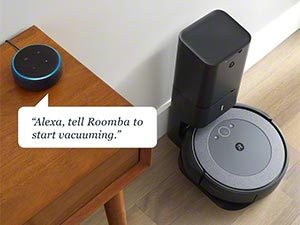
Roomba i3 and i3+ are also Wi-Fi connected Roombas, so you can control them right from the mobile app.
Unfortunately, the app doesn’t have all the features that the other high-end Roombas have, for example, digital barriers. But then, it is compatible with iRobot Genius Home Intelligence and also syncs with the Braava M6 courtesy of Imprint Link Technology.
The i3 and i3+ also work with Alexa and Google Assistant.
- Why Roomba i3/i3+
But unfortunately, it is a basic model that lacks key features such as intelligent navigation and mapping, and more so, it doesn’t have digital boundary marking. But for its price, it still a great bang for the buck.
- Why Roomba i8/i8+
- Why Roomba i7/i7+
- Why Roomba i6/i6+
Frequently Asked Questions
1. Is Roomba i7 suitable for multi-story houses?
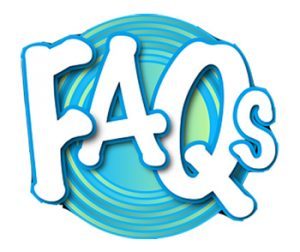
2. Is Roomba i7 compatible with Alexa?
3. What is the difference between Roomba i3 and i3+?
Roomba i3+ vs i7+ vs i8+ Summary
There you have it, folks, a comprehensive Roomba i3+ vs. i7+ vs. i8+ comprehensive review. While these models are quite similar, the differences are profound. The Roomba i3 and i4 are basically the same model, only that the i4 is a Costco model.
On the other hand, the Roomba i6, i7 and i8 are also the same model save for the difference in the runtime. If you are buying on Amazon, the battle here is between Roomba i6+/ i7+ vs. i3+. The former is the best if you want the best in class features, while the latter is best if you are on a tight budget.






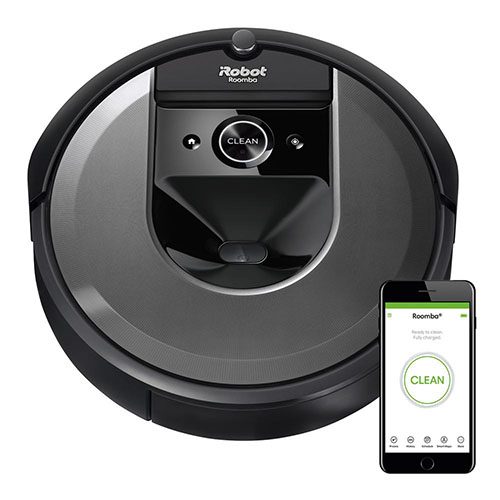


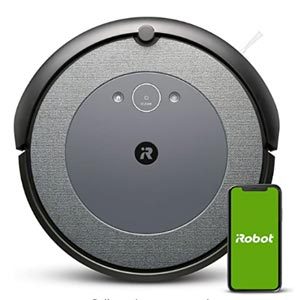
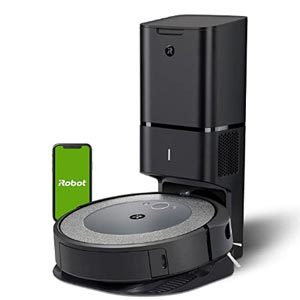
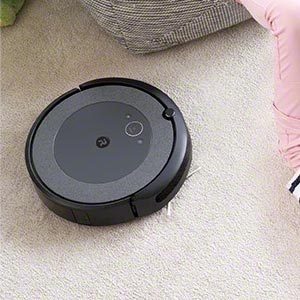
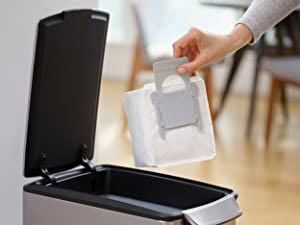
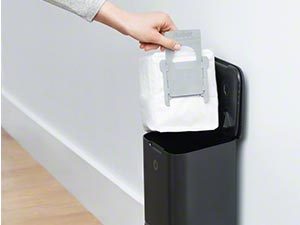
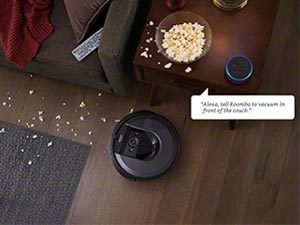
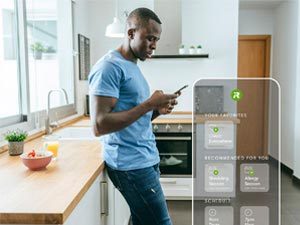

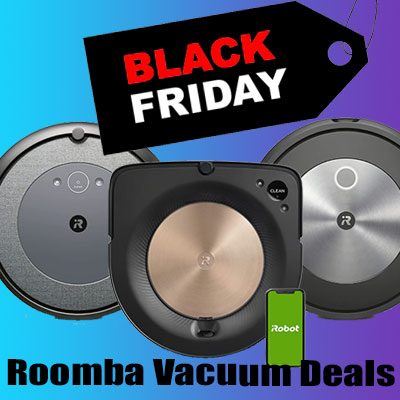
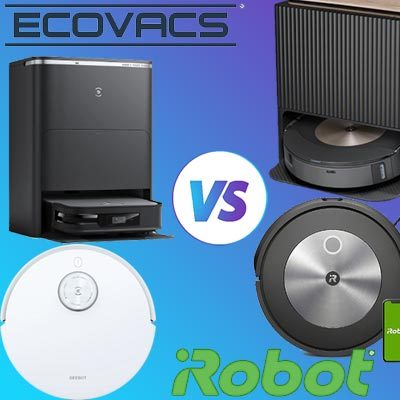
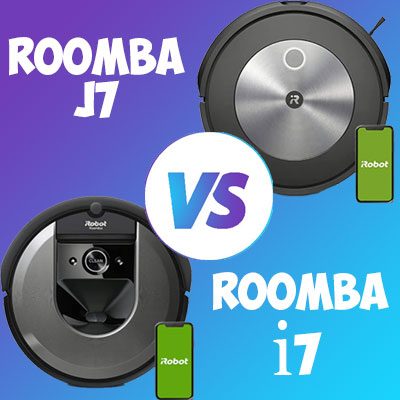
John Reyes
This is a great article and answered all my questions about the similarities and differences of all the Roomba models. This information is not available on the iRobot site.
James Lee
This was VERY helpful in my decision to purchase and understanding the differences! Great job putting this article together. Thank you!!!!
Tim Kalthoff
Great article. Thanks!
Jeanie
I am in the market for a new iRobot as my old one died and cannot be fixed. I am looking at the i3+ vs i8+ and this article was great in comparison of them. Thank you for making my life easier with this article.
Swartzcop Kennedy
Thank you for these warm words. We hope that you can choose between these two models. We suggest the Roomba i8+ because it has a battery with more capacity, an enhanced filter system, and a navigation system. The other features are the same, including the Self-Emptying CleanBase Unit.
Leonard McQuick
Hello! I have different types of flooring in my house – hardwood and tile. And there are wood transition strips between them. So, my question is – can the iRobot Roomba i3 cross these transition strips and move around the house smoothly?
Richard Harrison
Hi! Thank you for the question. This Roomba model can travel over thresholds up to ⅝ths of an inch. If your transition strips are like that or less, your vacuum won’t have any issues with crossing them. If the problem is only in that, it will go wherever it is free to go and do a decent cleaning job, indeed. If you need to vacuum the floors between a living room and a bathroom, be careful because it may sometimes close the door in the bathroom on its way back and get stuck.
Monique Brown
Hi! I want to buy Roomba i7+. It looks so powerful and nice. Though I am not sure yet because it is a bit more expensive than, say, the Roomba 980. Does it have any added features for the price, compared to the 980 and other models?
Swartzcop Kennedy
Hi! Thank you for the question. First of all, the Roomba i7+ is much quieter than other models. It can learn your floor plan, and the app defines the areas or rooms to clean (or not to clean). It is very convenient if you have large square footage. You can even schedule different room cleaning at different times. You don’t need the additional virtual wall devices like in the 980 models. The mapping feature works excellently, so you can send the robot to specific rooms and block it from cleaning others.